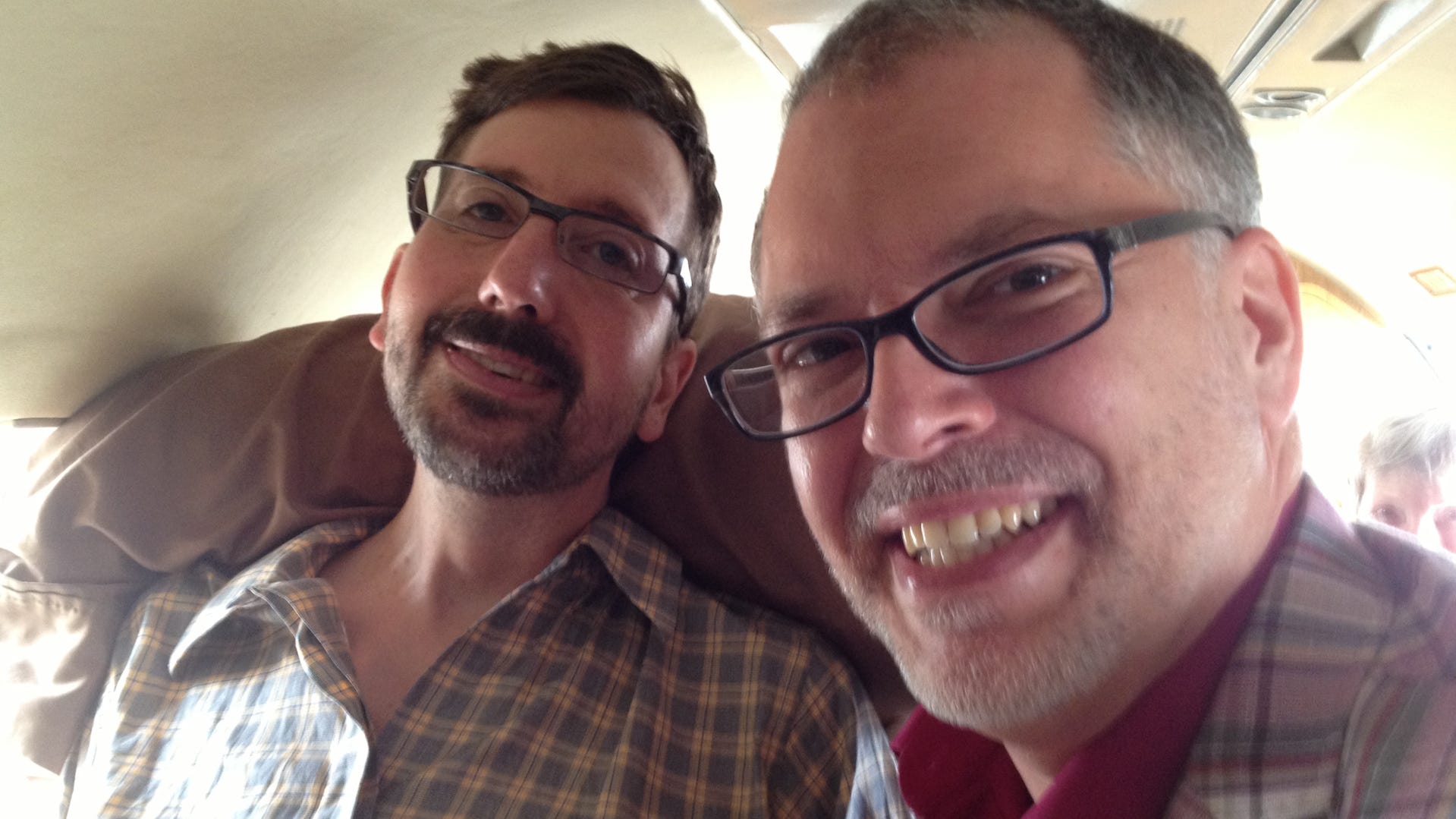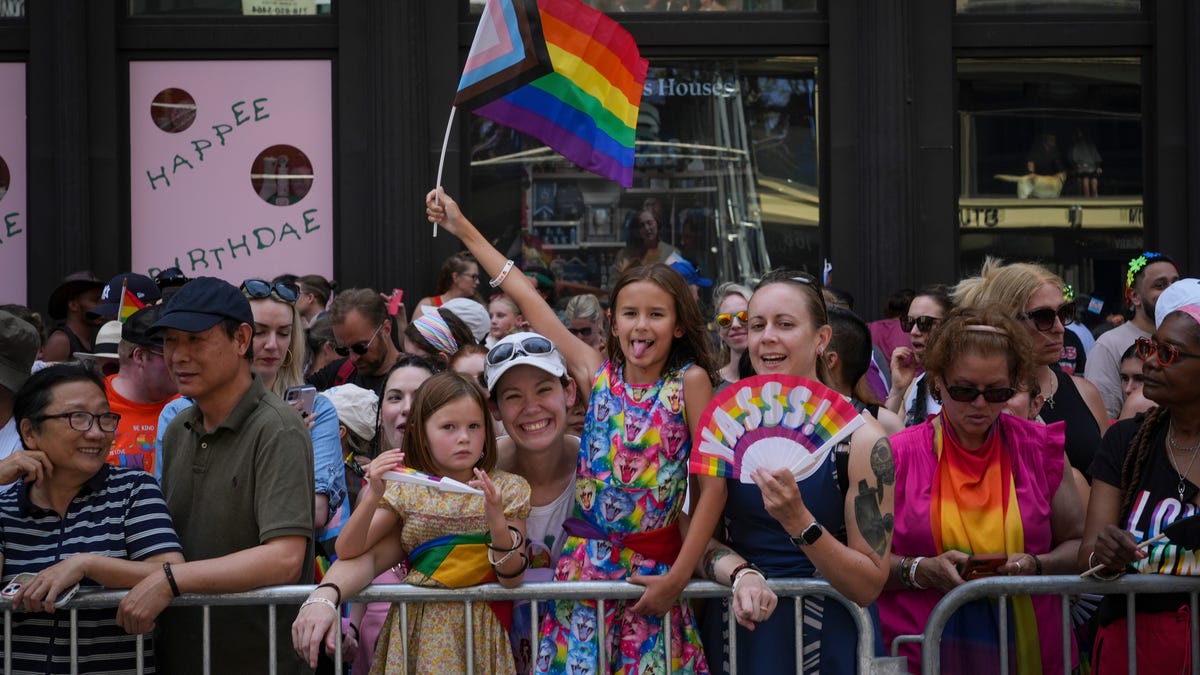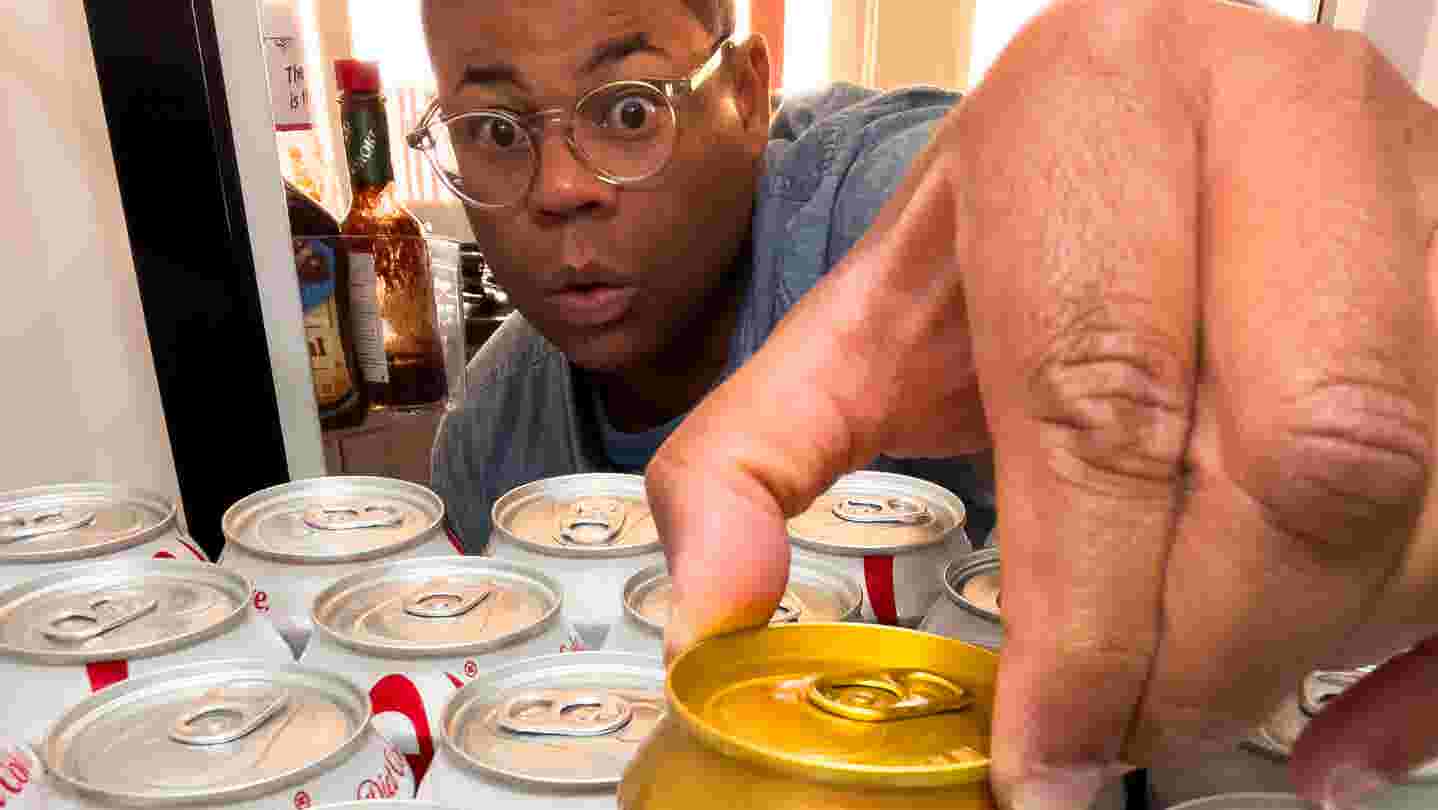
Jim Obergefell talks LGBTQ+ rights 10 years after Supreme Court ruling
Jim Obergefell, the lead plaintiff in the Supreme Court case that legalized gay marriage nationwide, looks back on its impact 10 years later.
The No. 7 train was the warmest place for Iden Campbell McCollum to sleep.
He took the subway to his job at Burger King, and spent many nights looping its route to Flushing, curled up over heaters that provided a brief respite from New York City’s winters.
At the time, he was a recent high school graduate who had aged out of foster care and found himself homeless and battling severe depression.
His struggle was exacerbated by confusion about his gender identity. He didn’t know any transgender people or have the language to describe what he was experiencing, but he knew he was different, and that his parents wouldn’t accept him.
“I really didn’t have any family, mostly because they assumed that I was a lesbian,” Campbell McCollum, now 57, says. “I didn’t have anybody to talk to about it because I had never seen another person like me.”
It’s been several decades since McCollum’s experience living on the streets of New York City, yet for many LGBTQ+ young people, his story may sound eerily familiar.
Today’s LGBTQ+ youth continue to face similar challenges, including disproportionate risk of homelessness, research shows, most often because of family rejection due to their identities. Though they make up 7% of the youth population, LGBTQ+ young people account for 40% of youth experiencing homelessness in the United States. Advocates who grew up grappling with these same challenges say stigma against homeless youth still runs rampant, and the issue urgently needs more visibility.
LGBTQ+ young people face more than twice the risk of being homeless
Dr. Colette Auerswald, a professor of public health at the University of California, Berkeley, says young people experience homelessness for systemic reasons, such as being impacted by juvenile justice systems, poverty and familial substance use. LGBTQ+ youth are more than twice as likely to experience homelessness as their peers, according to research from Chapin Hall at the University of Chicago.
“Reasons why young people are homeless are beyond their control, and people have to understand that,” Auerswald says.
For Marcelle Labrecque, leaving home at 18 didn’t feel like a choice. In Labrecque’s conservative hometown, “being a person of color and displaying any sort of queer tendencies,” it was socially implied that you “weren’t welcome.”
“My parents gave me an ultimatum of ‘go and get help for it, or leave,’” Labrecque, who uses the pronouns they/them, says. They bought a bus ticket to New York with a refund check from their school textbooks.
“It was a need to survive,” Labrecque added.
Homelessness research specific to youth is vital, according to Auerswald. While figures like the Point-in-Time Count and Housing Inventory Count provide insight, Auerswald warns they’re not a conclusive measure, as they were created primarily to count single homeless adults.
Mental health gaps contribute to LGBTQ+ homelessness
For Campbell McCollum, depression and suicidal ideation have been a lifelong struggle.
“I was depressed because I didn’t have the words to utilize, ‘Mommy, I think I’m a boy.’ I couldn’t verbalize that to her,” McCollum says. “My depression started at a very young age, and it wasn’t wasn’t just a gender thing, it was environmental because there was abuse.”
LGBTQ+ young people are less likely to access mental health care than their peers, citing affordability and not wanting to obtain permission from a parent. Nearly half of transgender boys and men express worry that accessing care would result in someone calling the police or being involuntarily hospitalized, according to The Trevor Project’s 2024 U.S. National Survey on the Mental Health of LGBTQ+ Young People.
One night, a police officer saw McCollum nodding off in the corner of the train. She gave him $20 and the address for a New York location of Covenant House, a shelter for adults ages 16 to 24. Once there, he had the opportunity to explore his identity in a safe space for the first time.
Covenant House helped him secure a part-time job and put him back in touch with his parents, and he eventually saved enough to move to North Carolina, where he reconnected with his mother.
Black transgender and nonbinary young people, who report the highest indicators of poor mental health, face the highest risk of youth homelessness.
The Trevor Project’s Director of Research Science, Derrick Matthews, called it a “two-fold problem” where vulnerable groups are more likely to experience homelessness, and where the effects of homelessness tend to be exacerbated.
Before moving to New York, Labrecque had only met three other Black people. During their time in the city, they were introduced to Black and queer spaces while working in Hell’s Kitchen. They worked on Season 2 of the popular FX TV show “Pose,” which they credited with opening their eyes “to the range of the existence of queer people.”
“We were having very raw, very real, and very intense discussions that if we were in a predominantly White space, we might not feel comfortable sharing,” Labrecque says.
LGBTQ+ youth navigate Trump administration’s cuts to specialized care
LGBTQ+ advocates say concerns for queer homeless youth are heightened amid funding cuts for LGBTQ+ care under the Trump administration.
On June 17, the administration instructed the 988 Suicide & Crisis Lifeline to end its specialized services for LGBTQ+ youth within the next month. Nearly 1.3 million LGBTQ+ people sought support from the hotline via call, text, or online chat since its launch in 2022. The Trevor Project, which takes 50% of hotline volume, says the move is “devastating.”
The Supreme Court also upheld Tennessee’s ban on gender-affirming care for minors. In her dissent, Justice Sonia Sotomayor said the court “abandons transgender children and their families to political whims.”
“The fact that we’re taking away services that could be protective means that, for sure, more young people will suffer harm and death,” Auerswald says.
What’s the answer?
Now 29, Labrecque is a full-time performer and theater consultant. Services they accessed at Covenant House – learning how to fill out scholarship forms, purchasing dance shoes and getting the legal support to change their name to feel more affirmed in their identity – were instrumental in continuing their musical theatre education and training from the Borough of Manhattan Community College.
“I’m only here today because of resources and because I took full advantage of every single program, every single opportunity,” Labrecque says.
Public health experts say access to those services during homelessness is vital to stopping the pipeline into adult homelessness. Roughly half of the people over 55 who experience homelessness first experienced homelessness as minors or young adults, according to Auerswald.
Auerswald cautions that homelessness and unstable housing have no one look. It could mean sleeping in a car, couch surfing for extended periods of time, or relying on shelters.
“They want the same things that young other people want,” Auerswald says of these young people, adding they’re grappling with homelessness while seeking education, stable relationships and the opportunity to establish a professional identity. “If you’re doing that and you have no place to live, that’s really hard.”“They’re resilient, and I think people really have to appreciate that,” she added.
If you or someone you know is in crisis, call, text, or chat with the Suicide and Crisis Lifeline at 988, or contact the Crisis Text Line by texting TALK to 741741.
Rachel Hale’s role covering Youth Mental Health at USA TODAY is supported by a partnership with Pivotal Ventures and Journalism Funding Partners. Funders do not provide editorial input. Reach her at rhale@usatoday.com and @rachelleighhale on X.









xowkjy